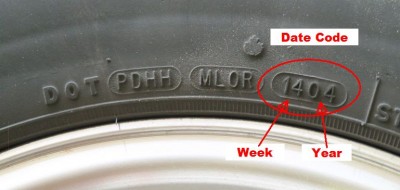RV solar systems can be designed many different ways to perform many different functions. They can consist of one very small panel for battery maintenance (trickle charging) applications or many large panels together with charging devices and an inverter, which can provide most or all of an RV’s electrical needs. Many RVs are currently produced with some amount of solar already installed. Determining which you have (or want to have) is simple. James Mannett, a former energy industry executive and current owner of CEA Solar, answers questions from readers about the proper use of Solar Panels for RV use.
Dear James,
I have a 2004 Travel Supreme Motorhome. It looks like I have a 10-watt solar panel on the roof, but I am really not sure what the size is. It looks broken and some of its circuits are exposed. What is it connected to and what is it for? Could you give me some information on how to replace it? What procedure should I follow? I am new at this. Thanks. Signed: Hanging Circuits.
Dear Circuits:
Your 10-watt panel is most likely a trickle charger AKA a battery maintainer. It is usually wired to the engine battery and is intended to keep it fully charged while in storage. These small panels help compensate for the small “parasitic” drain on motorhome engine batteries from various electronic devices and from the natural discharge rate of batteries when they sit unused. Many RV manufacturers install a small indicator light inside the passenger compartment, which will light up when the sun is out indicating that the panel is connected and working. The most common panels are 5-10 watts and usually about the dimensions of a standard novel. To determine the actual wattage, you need to carefully remove the remains of the panel and look on the back. There will usually be a label that will tell you the wattage, operating voltage, and operating current (amps). When replacing it, find a replacement panel with the same or similar wattage and operating voltage.
Replacement of your 10-watt panel is pretty simple, but the removal procedure can vary depending on how the panel was originally mounted—glued to the roof, screwed to the A/C housing, etc.
- Start by disconnecting your engine battery.
- Remove the old panel along with all the broken parts and pieces and expose the two wires that were connected to the panel.
- Attach the + and – wires to a new panel. The panel connections will be marked accordingly. The wire colors can vary depending on the RV manufacturer. If possible, read the polarity from the connectors on the old panel before removal.
- Re-attach the new panel to the roof in the same manner as the old one. Be sure to seal any and all roof penetrations. Also, be sure to seal the hole where the wire comes through the roof. DICOR is a typical RV roof sealant and is available at most RV supply stores. Use plenty of it.
- Re-connect your engine battery.
- Observe the charge indicator, which is a red or green LED sometimes mounted inside the RV. The sun must be on the panel.
- If you don’t have a charge indicator, simply put a digital volt meter on the engine battery and observe the voltage for 20-30 min. If the voltage climbs slowly, the panel is working. If you don’t have a digital volt meter, they are less than $10 at any number retail outlets.
- If you suspect the new panel is not working, check all fuse panels. The solar panel is sometimes wired through a fuse that may have blown when the panel broke.
Have questions about RV solar power? You may write James Mannett at [email protected] or visit his blog at http://blog.rvsolarnow.com where you may post your comments or suggestions about this article or others that appear there. Meet and discuss RV solar power at the Quartzsite, Arizona, rally January 21-30, 2011, at booth #140.
_________________________________________________________________________
Read more Tech Tips



Mike Barton
I have 3 12volt house battires & would like to change them out for 1 large 12 volt batt . what could you reccemond am planning on adding solar panals later on can you help ?
thanks
Mike Barton